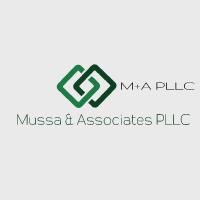
If you are a small business, it is imperative that you have a business continuity plan that enables you to rapidly respond to a variety of potential business disruptions. At a minimum your small business should have in place a 6 to 9 month disaster recovery plan.
The type of business disruption that occurs may require a different approach to enable your business to survive and recover. Your actual disaster recovery plan could be much longer depending on your specific operational and financial risks. We regularly advise our clients to focus on developing a disaster recovery plan that incorporates the following key considerations:
Operational Disaster Recovery Considerations
1. Identify potential business disruption risks.Think about your exposure by disaster type and potential impact and duration. Consider your response to a natural disaster or act of god, contagion, social media or public relations disaster, technology infrastructure failure, loss of key personnel, cyber threats, loss of key customers or supply chain shock.
2. Assess viability of alternative work arrangements. Consider whether or not your business can support teleworking or remote capabilities during a disaster. Additionally, evaluate the impact a disaster might have on employees that travel for business and the impact of any travel restrictions.
3. Evaluate your information technology support infrastructure. Think about your ability to continue your operations via remote set up. Remote capabilities are easier to deploy for service based businesses. Onsite businesses might be able to take advantage of co-location sites or hot sites with proper planning and regular testing. Test remote capabilities at least annually.
4. Review adequacy of business insurance coverage. This is probably the most critical aspect of disaster readiness and affect your recovery time and capabilities during a disaster. We recommend that our clients at a minimum obtain insurance coverage for general and professional liability, business interruption, key man life insurance (owner or executive death or incapacity), property liability, workers’ compensation, long term disability, cybersecurity and remediation.
Financial Disaster Recovery Considerations
1. Working capital adequacy plan. Set up a disaster cash reserve fund over time and take out a working capital line of credit to cover at least 6 to 9 months of expenses. 12 months is best.
2. Alternative working capital sources. Consider any federal or state programs that may provide financial relief in the form of short term low interest loans, deferral of tax payments or similar measures. In order to take advantage of these programs you must have your financial affairs in order and be able to clearly document your financial needs.
3. Business interruption insurance coverage.Ensure your coverage will provide financial resources for a wide range of disasters including contagions, earthquakes, hurricanes, floods and any other potential disaster that might be insurable.
4. Supplier relief provisions. If possible ensure that supplier agreements (leases, purchase contracts, etc.) include a business interruption provision that enables your business to delay payment for goods and services for up to 90 days in the event of disaster.
Employee Disaster Recovery and Support Considerations
1. Employee financial support. During a disaster your employees will likely have significant financial commitments and requirements and look to your business for help. If you value your employees you will have a financial plan in place to provide for them during the recovery phase. I would recommend against mandatory use of paid time off unless your employees choose to do so. Financing the payment of your employees when you have no income can be tricky, but you should consider funding such a plan using your business interruption insurance and working capital reserves, if possible.
2. Contagions. Where practical ensure your employees can work remotely during an active contagion. Potential claims in this area can bankrupt a small business easily. We encourage business owners to carry adequate workers’ compensation and long term disability insurance for such situations. These coverage options will provide for health and other costs that your employees may incur as they recover from a work related claim and provide income continuity for your employees.
The above considerations are not all-inclusive and could be significantly more complex depending on your individual small business. We hope this information is useful to you and that you will set up a small business disaster recovery plan that will ensure continuity in the event of a future disaster.
We strongly recommend that you obtain the services of a qualified firm to assist you with disaster planning. The cost of not taking action can be significant and potentially bankrupt your business and affect the lives of your employees, suppliers and other stakeholders forever.
If you have additional questions about developing a business disaster plan or this blog please contact us at your convenience to set up a free consultation to discuss your situation. Contact us at info@kilyncorp.com or call us direct at (703) 755-0117.
Published by: KiLyn Corporation, March 18, 2020
Author: Kito Mussa, CPA/CFF, CFE, CGMA

